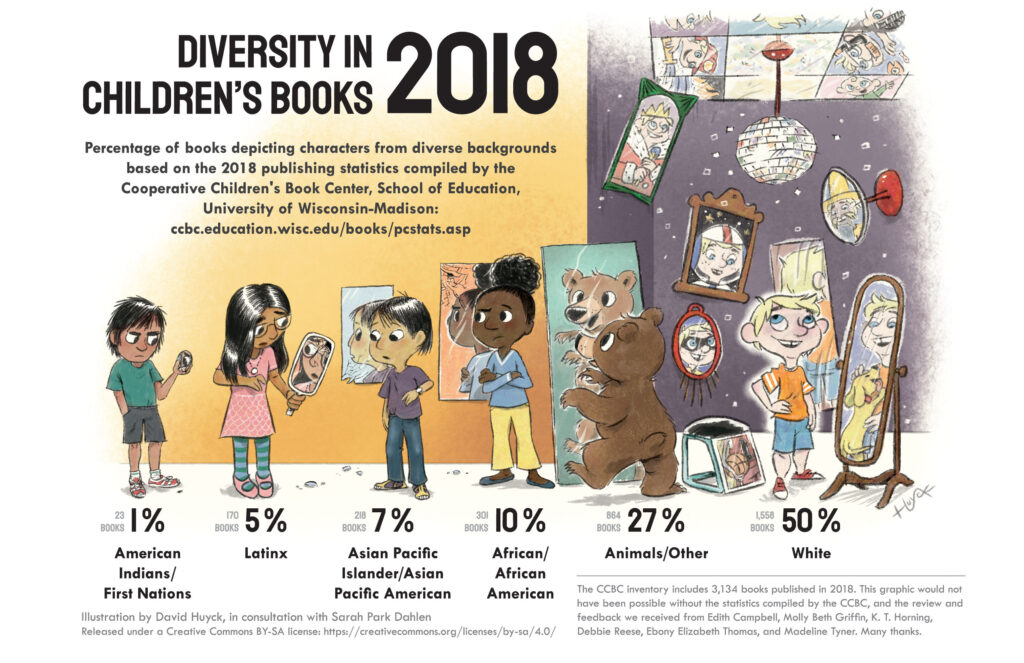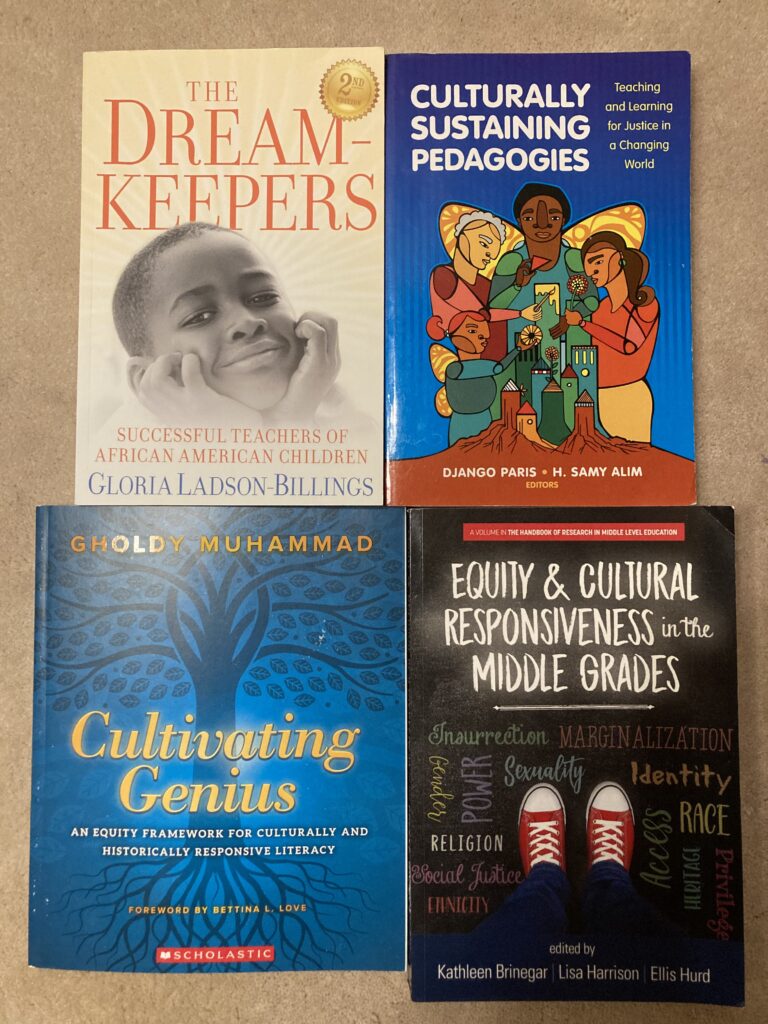Equity. In Vermont and beyond, educators and administrators are talking about equity. But what does equity look like in practice? Most importantly, how do we stop talking about it and start doing it? Culturally responsive practices are a concrete way to do equity work in the classroom.
So what are they and what do they look like?
What we are calling culturally responsive practices (CRP) come from an array of research and pedagogies:
- culturally relevant teaching;
- culturally responsive pedagogies;
- and culturally sustaining pedagogies.
To name a few.
In the 1990s, Gloria Ladson-Billings, one of the leaders in this movement, studied eight teachers who were positively impacting academic achievement among African American students. Her profound findings inform the work that continues to influence us today.
At the heart of CRP is this truth: education is not a culturally neutral practice.
Naming this forces us to reckon with reality: when we fail to acknowledge culture we are silently but powerfully endorsing dominant cultural narratives and sustaining the status quo.
4 aspects of culturally responsive practices we’ve identified from the research literature.
These themes will guide us as we move towards more equitable classrooms.
- Be transparent and intentional about culture.
- Take an appreciative stance.
- Provide mirrors and windows.
- Educate about and for social justice.
Let’s look at them one by one.
1. Be transparent and intentional about culture.
Randy Bomer defines culture as “a group of peoples’ way of life”. It includes patterns of communication, values, behaviors, habits of being, and ways of belonging and interacting. The default, in schools and beyond, is dominant culture. In the United States that means white, middle class, heteronormative, and able-bodied.
The problem isn’t culture itself, it is assuming that everyone shares the dominant culture. If we assume dominant culture is THE culture, we alienate some students from our classrooms.
This lack of belonging is a precursor to the school-to-prison pipeline. As a result, when we foster a sense of estrangement for some students we are unintentionally sending a message. That message is that some people don’t belong, are not intelligent, or that school has no relevance to their lives.
CRP asks us to name culture, talk about it, and make it plural rather than singular.
Culturally responsive classrooms embrace diversity as an asset. As a result, they welcome cultural strengths from all students. They move from monocultural to multicultural by naming cultural perspectives. They make it clear that there are many ways of being, doing, and understanding the world.
CRP forces us to acknowledge all students’ lived experiences by planning learning experiences that are personally meaningful and relevant. We must build on their cultural understandings.
2. Take an appreciative stance.
Learners come to us with so many strengths from their lived experiences. As a result, we can only begin to understand these when we seek to know students and their communities well. This understanding becomes the foundation upon which to build new skills, knowledge, and understandings. As well as strengthening the skills, knowledge, and understandings that are a part of their cultural heritage.
It’s important to note that relationships are at the core of a culturally responsive classroom. Being in genuine relation with our learners and their communities is complicated.
For instance, it means seeing their assets and strengths, not their deficits. Griner and Stewart talk about this as closing the divide between home and school.
“CRP builds bridges of meaningfulness between home and school experiences as well as between academic abstractions and lived sociocultural realities” (p. 589).
For educators, this often means we must acknowledge and confront the stereotypes we hold about our learners in order to see them in all of their glory! An appreciative stance allows us to appreciate what they know and can do while moving them towards their next steps for learning.
3. Provide mirrors and windows.
Rudine Sims Bishop gave us the metaphor for windows, mirrors, and sliding doors when thinking about literature. Books serve as mirrors when they allow us to see our experience represented in their pages. They become windows when we see the lives of others come to life on the page. And sliding doors help us build common ground across differences.
Sims Bishop says,
“When children cannot find themselves reflected in the books they read, or when the images they see are distorted, negative, or laughable, they learn a powerful lesson about how they are devalued in the society of which they are a part. Our classrooms need to be places where all the children from all the cultures that make up the salad bowl of American society can find their mirrors.
Children from dominant social groups have always found their mirrors in books, but they, too, have suffered from the lack of availability of books about others. They need the books as windows onto reality, not just on imaginary worlds. They need books that will help then understand the multicultural nature of the world they live in, and their place as a member of just one group, as well as their connections to all other humans” (p. 1).
The metaphor of windows and mirrors has salience beyond the books we share.
In short, all learners should see themselves in the curriculum, environment, and instruction in their classroom. And all learners should see perspectives different from their own in these areas as well. If our goal is to prepare our students for participation in a diverse democracy, we should be providing windows and mirrors from the moment they enter our schools.

4. Educate about and for social justice.
CRP seeks to support students’ immediate success while also providing them with the tools to make a positive impact on their communities and society.
From the inception of Critically Relevant Teaching, Ladson-Billings identified sociopolitical awareness as a central component, alongside student learning and cultural competence. Yet in the recent book Culturally Sustaining Pedagogy: Teaching and Learning for Justice in a Changing World, Django Paris and Samy Alim observe that “critical consciousness is the neglected component of CRP.”
CRP is often used as a proxy for good teaching, but without systems analysis and active anti-oppression, it is more of a bandaid than a long-term solution.
Further, Paris and Alim bring us back to the need for CRP in a pluralistic democracy:
“Robust learning environments must address goals beyond cognitive skills alone [and also focus on] the problems of sustaining a democracy, resisting stereotypes, engaging in activism for that which is just, and learning to be resilient in the face of changing and evolving sources of threat.” (p. 270)
In CRP classrooms, students learn how to critique and dismantle oppressive systems. They have the opportunity to make immediate impact in their communities. Furthermore, they can make connections to the long-term project of transforming society so that inclusion and justice for all is the norm. They are not just learning how to be successful individually, they are learning how to live and grow collectively.
Culturally responsive practices are for all students
Ladson-Billings developed Culturally Relevant Teaching for Black students. The concept and practices have evolved for the primary purpose of supporting students who are marginalized inside and outside of schools. As white authors, we are sensitive to the danger here of centering whiteness and appropriating ideas into spaces that they aren’t designed for.
One strategy is to make sure we are clear about where the ideas and research originally came from. That’s why we will be quoting and citing extensively in this series.
Gholdy Muhammad makes it clear that these pedagogies are for ALL students in her book Cultivating Genius: An Equity Framework for Culturally and Historically Responsive Literacy.
“One fallacy is that criticality is only for Black and Brown people, or others who have been oppressed across the world… Perhaps the people who need criticality the most become those who share identities with the greatest oppressors of the world. But in truth, given the complex identities of youth, all students and teachers need culturally and historically responsive education” (p. 121-122).
Similarly, in a review of research, Equity and Cultural Responsiveness in the Middle Grades, editors Kathleen Brinegar, Lisa Harrison, and Ellis Hurd emphasize that culturally responsive approaches need to extend to white students as well:
“Two questions to guide this work might include: Does the middle grades concept sustain all aspects of students’ identities? And does it prepare students with dominant identities to be critically conscious? Given that its founders began the middle grades movement to create more equitable schooling experiences for young adolescents, it is time to revisit those activist roots” (p. 343-4).
Educating for and about social justice is for all students, and CRP is the best way we know of to get there.

A note on culturally responsive pedagogies in predominantly white schools
In Vermont, most schools serve predominantly white students and communities. We think that culturally responsive and sustaining pedagogies are an important tool for furthering equity in these schools.
But we want to keep a few things in mind:
- Our Black, Indigenous, and Students of Color (BISOC) deserve CRP in all educational spaces. This applies to predominantly white institutions, perhaps especially so. For example, Vermont is often referred to as a “white state.” This framing erases our BISOC students and their educational needs. Yet 10% of our students identify as BISOC – that’s more than 8000 students! And we know they have less access to opportunity and are harmed more by punitive policies than their white counterparts. Even if there is only one BISOC student in a classroom or school, that student has the right to fully inclusive and effective education.
- White students have cultures too. Being transparent about culture means interrogating whiteness and also going beyond race and ethnicity. A white student may participate in youth culture, Vermonter redneck culture, sports cultures, etc. Like heritage cultures, these cultures can provide curriculum relevance, broaden perspectives, and strengthen identity and self-awareness. They are deserving of both honoring and critique.
- White educators need to start with themselves. The “cultural excavation” work of white teachers, as Paris and Alim put it, is especially important since the pervasiveness of white culture makes it even more difficult to see. This is ongoing work of unlearning and learning history, interrogating whiteness, and recognizing biases in beliefs, perceptions, and actions.
The cultures and identities of students, educators, and their communities must be kept front and center.
We hope you join us.
In future posts, we will look at three aspects of schooling one by one: the learning environment, curriculum, and pedagogy. For each, we will apply the four themes that we’ve explained in this post. We will share practices and examples that can make CRP in Vermont and rural schools as concrete as possible.
How are you enacting or promoting culturally responsive practices?
This post is the first in a four-part series. We use the four aspects (cultural transparency, an appreciative lens, windows and mirrors, and a focus on social justice) to explore culturally responsive learning environments in part two . We use the four aspects to take a look at culturally responsive curriculum in part three and instruction and assessment in part four. The series is co-authored by Jeanie Phillips and Life LeGeros.
References and further reading
- Bomer, R. (2017). What would it mean for English language arts to become more culturally responsive and sustaining? Voices from the Middle, 24(3), 11–15.
- Brinegar, Kathleen, Lisa Harrison & Ellis Hurd (Eds.). (2019) Equity and cultural responsiveness in the middle grades. Information Age Publishing.
- Gay, G. (2000). Culturally responsive teaching: Theory, research, and practice. New York, NY: Teachers College Press.
- Gorski, P. C. (2017). Reaching and teaching students in poverty: Strategies for erasing the opportunity gap. New York, NY: Teachers College Press.
- Griner, A. C., & Stewart, M. L. (2013). Addressing the achievement gap and disproportionality through the use of culturally responsive teaching practices. Urban Education, 48(4), 585–621.
- Ladson-Billings, G. (1995). Toward a theory of culturally relevant pedagogy. American Educational Research Journal, 32(3), 465–491.
- Ladson-Billings, G. (2014). Culturally relevant pedagogy 2.0: A.K.A. the remix. Harvard Educational Review, 84(1), 74–84. DOI:10.17763/haer.84.1.p2rj131485484751
- Paris, D., & Alim, H. S. (Eds.). (2017). Culturally sustaining pedagogies: Teaching and learning for justice in a changing world. New York, NY: Teachers College Press
- Sims Bishop, R. (1990). Mirrors, windows, and sliding glass doors. Perspectives: Choosing and Using Books for the Classroom, 6(3). https://scenicregional.org/wp-content/uploads/2017/08/Mirrors-Windows-and-Sliding-Glass-Doors.pdf



One Reply to “Culturally responsive practices for equity in the classroom”
Comments are closed.